
Common processing methods of sintered NdFeB
2023-07-31 13:49The main shapes of sintered NdFeB magnet products include square pieces, cylinders, rings, tiles, sectors and various special-shaped products. In actual production, large blanks are produced first, and then processed according to the size requirements of users to obtain the final finished product.
Sintered NdFeB is prepared by powder metallurgy. The material has high hardness, high brittleness, and is easy to break; and the heat release, corrosion and defects in the processing process will cause damage to the magnetic properties. Therefore, it is necessary to choose a suitable processing method according to these characteristics. At present, sintered NdFeB machining is mainly based on traditional cutting, grinding, chamfering, drilling, etc., and there are also methods such as EDM cutting, laser processing, and ultrasonic processing.
1.Slicing (cutting) process
Slicer, wire electric discharge machine, wire saw or laser cutting machine are mostly used to complete the cutting process.
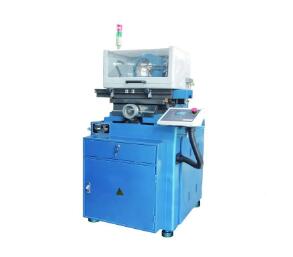
Slicer: The NdFeB magnetic steel is automatically cut by a high-speed rotating thin slice inner circle diamond tool, and the cutting oil is used as the cutting coolant during the slicing process. The advantage is that there is no need to customize special tools, it is flexible, and it is suitable for sample processing and truncation processing. However, due to the low processing efficiency and material yield, and the weak ability to guarantee verticality, batch slicing production has been gradually replaced by multi-wire cutting machines (wire saws).
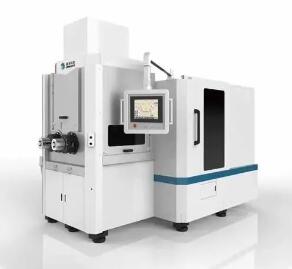
Multi-wire saw cutting:use fixtures to fix the workpiece on the workbench, through the roller cloth diamond wire, the high-speed running diamond wire (diameter 0.15~0.2mm) rubs against the magnetic steel to realize material cutting, and the cutting process is cooled by cutting fluid . The main feature is that it can cut multiple workpieces at the same time, with high production efficiency, good product rate and yield rate, strong ability to guarantee verticality, and suitable for batch continuous processing. However, special rollers need to be customized for products with different specifications.
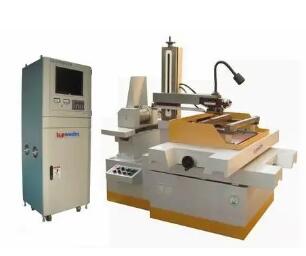
Wire EDM: Use molybdenum wire electrodes to generate high-frequency electric sparks on the NdFeB magnets to melt them locally. Controlled by a computer, the electrode wires are cut according to a predetermined trajectory. The advantage of wire electric discharge cutting is high processing precision, which can be used for slicing processing of tile-shaped and special-shaped products and cutting of large magnets. The disadvantage is that the cutting speed is slow, and the melting zone of the cutting surface has a great influence on the magnetic properties.
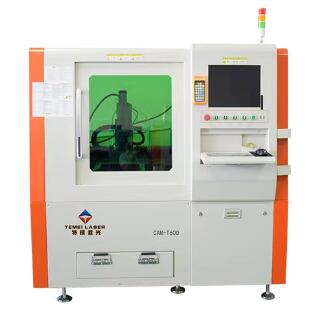
Laser cutting: the laser beam is focused on the magnetic material, the magnetic material is melted and gasified, and the disappearing area forms a slit. Laser cutting is non-contact processing, which has the characteristics of low impact on the environment, high processing precision, and can process inclined surfaces, etc., and has broad application prospects. However, changes in temperature and stress during processing have a certain impact on the performance of the magnet, and when cutting thicker products due to the divergence of the laser beam, there is a slope in the cutting section.
2. Grinding process
It mainly refers to the processing method of grinding the surface of the workpiece with a grinding disc or a grinding wheel. The commonly used grinding methods for square NdFeB magnets are: vertical grinding, flat grinding, double-end grinding, etc. Cylindrical and circular NdFeB blanks are often used for centerless grinding, square grinding, internal and external round grinding, etc. Multi-station forming grinder can be used for tile-shaped, fan-shaped and special-shaped magnetic steel.
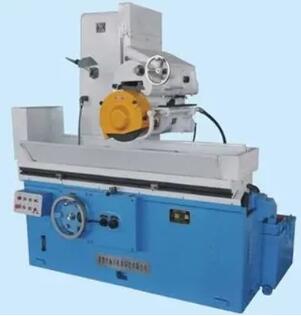 Surface grinder: It is used for surface grinding of magnetic materials, and can also be used for multi-face processing. Generally, a horizontal axis rectangular table surface grinder (flat grinding) or a vertical axis circular table surface grinder (vertical grinding machine) is used. The flat surface of the magnetic steel is used as the reference surface to be neatly stacked and fixed on the disk workbench with a baffle fixture, etc., and the grinding wheel is used for reciprocating Surface grinding.
Surface grinder: It is used for surface grinding of magnetic materials, and can also be used for multi-face processing. Generally, a horizontal axis rectangular table surface grinder (flat grinding) or a vertical axis circular table surface grinder (vertical grinding machine) is used. The flat surface of the magnetic steel is used as the reference surface to be neatly stacked and fixed on the disk workbench with a baffle fixture, etc., and the grinding wheel is used for reciprocating Surface grinding.
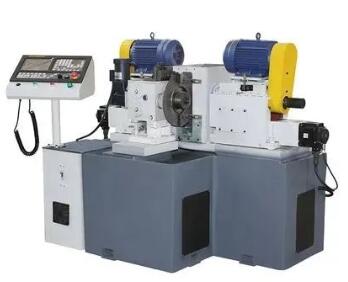
Double-end grinding machine: The conveyor belt passes through the product continuously, and the two grinding wheels are located on both sides of the product. The horizontal axis double grinding head rotates to drive the grinding wheel (the two grinding wheels produce an inclination angle), and the two planes of the product are ground under the rotation of the grinding wheel. The double-end grinding machine has high processing precision and small surface roughness. It is the most widely used symmetrical plane processing equipment in NdFeB machining.

Centerless grinding machine (or square round grinding machine): centerless grinding machine is used for cylindrical grinding of cylindrical blanks, and square round grinding machine is used for round grinding of square magnetic steel. Through the feeder and the guide rail, the magnetic steel passes through the guide wheel and the grinding wheel in turn. The guide wheel drives the magnetic steel workpiece to rotate on the pad iron, and the grinding wheel grinds the outer circle of the magnetic steel to the required diameter.
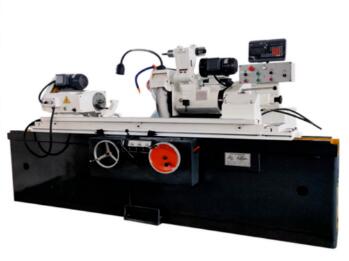
Internal and external circular grinder: Fix the magnetic steel workpiece by the fixture, then move the grinding head along the inner or outer circumference of the workpiece, grind the magnetic steel workpiece to the set size of the inner and outer circles, and make the surface smooth and remove glitch. It is mostly used for internal and external surface processing of ring products.
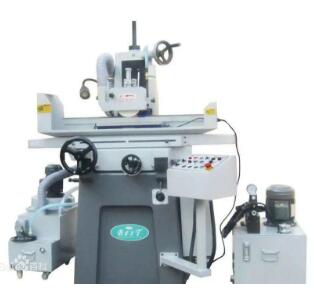
Form grinding machine: It can grind various planes and curved surfaces or grind complex forming surfaces with special grinding wheels (grinding wheel modification). It is suitable for grinding without motorized feeding to meet the shape requirements of different types of products. It is usually used for mechanical chamfering of products or processing of special-shaped products.
3. Drilling (punching) processing
The drilling process of sintered NdFeB is very prone to fracture or chipping, so specific equipment and processes are required for drilling operations. Commonly used equipment for NdFeB inner hole processing includes punching machine tools, instrument lathes and bench drilling machines.
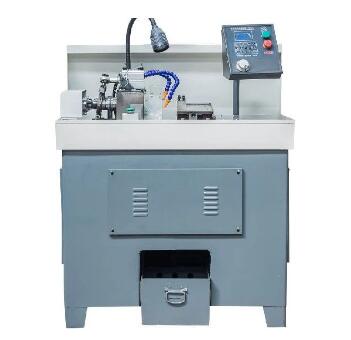
Drilling machine (hole drilling machine): A device that uses a diamond ring tool, the product is fixed by the chuck and rotated by the spindle, and the tool is fed to process the inner hole of the product. Hole lathes are usually used to process NdFeB products with inner holes above 8mm. Excavation and reaming can be accomplished with specially designed digging and reaming knives.
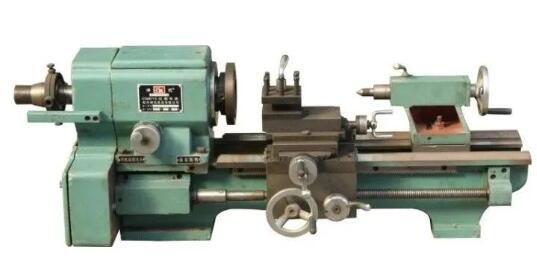
Instrument lathe: The instrument lathe clamps the magnetic steel product through the fixture, drives the product to rotate continuously through the spindle motor, and drills the rotating workpiece by the fixed alloy tool. It is mainly used for drilling and drilling of cylinders, rings and small square products, and the processing hole diameter is less than 5mm.
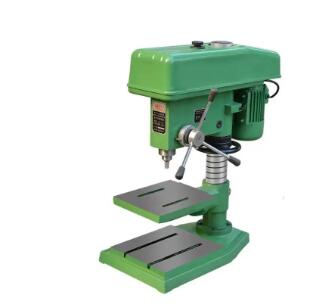
Benchtop drilling machine: It uses self-made tooling to position the product, and the carbide tool is rotated and fed to realize drilling and processing of the product; the main difference from the instrument lathe is that the workpiece of the instrument lathe rotates and the tool is fixed; while the benchtop drilling machine The workpiece is fixed, The tool rotates. Therefore, the desktop drilling machine can be applied to the processing of through holes, blind holes and stepped holes of special-shaped products.
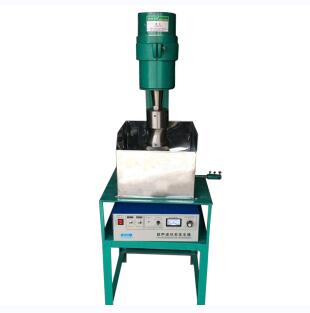 Ultrasonic drilling machine: the ultrasonic energy is concentrated to the position of the drill bit through the transducer, and the high-frequency mechanical vibration of the drill bit drives the abrasive suspension, and the impact perforation is realized through high-speed impact, friction and cavitation. Ultrasonic drilling has high precision, efficiency and pass rate, and can be applied to small hole processing of magnetic steel.
Ultrasonic drilling machine: the ultrasonic energy is concentrated to the position of the drill bit through the transducer, and the high-frequency mechanical vibration of the drill bit drives the abrasive suspension, and the impact perforation is realized through high-speed impact, friction and cavitation. Ultrasonic drilling has high precision, efficiency and pass rate, and can be applied to small hole processing of magnetic steel.
4. Chamfering:
NdFeB magnetic products in the process of grinding, slicing, drilling and other processing, the sharp corners are easy to cause edge drop corners, and the tip effect in the electroplating process will make the uniformity of the coating worse. Therefore, after machining, the magnetic steel is usually chamfered, including mechanical chamfering and vibration chamfering. Common chamfering equipment includes vibration grinding chamfering machines and drum chamfering machines.
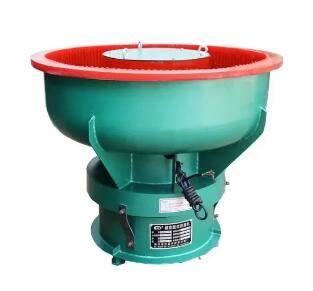 Vibration grinding and chamfering machine: The vibration deviation generated by the vibration motor drives the magnetic steel and abrasive in the working tank to move up and down, left and right or rotate and rub against each other, so that the surface of the product is smooth and smooth, and the edges and corners are rounded at the same time. Commonly used abrasive media include silicon carbide, brown corundum, etc.
Vibration grinding and chamfering machine: The vibration deviation generated by the vibration motor drives the magnetic steel and abrasive in the working tank to move up and down, left and right or rotate and rub against each other, so that the surface of the product is smooth and smooth, and the edges and corners are rounded at the same time. Commonly used abrasive media include silicon carbide, brown corundum, etc.
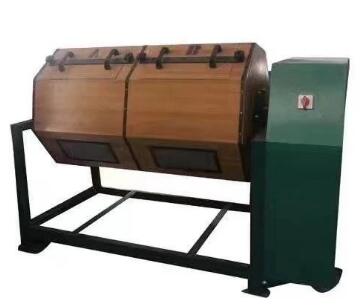
Drum chamfering machine: put NdFeB magnet products, abrasives and grinding liquid into a sealed horizontal drum, and the drum rotates to make the products and abrasives centrifugally rotate and rub to play the role of chamfering.
The manufacturer will choose the most economical and efficient processing route according to the product size specification and shape and position tolerance requirements. For the quality of processed products, we should mainly focus on dimensional tolerances, shape and position tolerances and appearance. Common defects and defects in processing include: excessive size, poor verticality and contour, missing corners, knife wires, scratches, grinding marks, corrosion, hidden cracks, etc.
